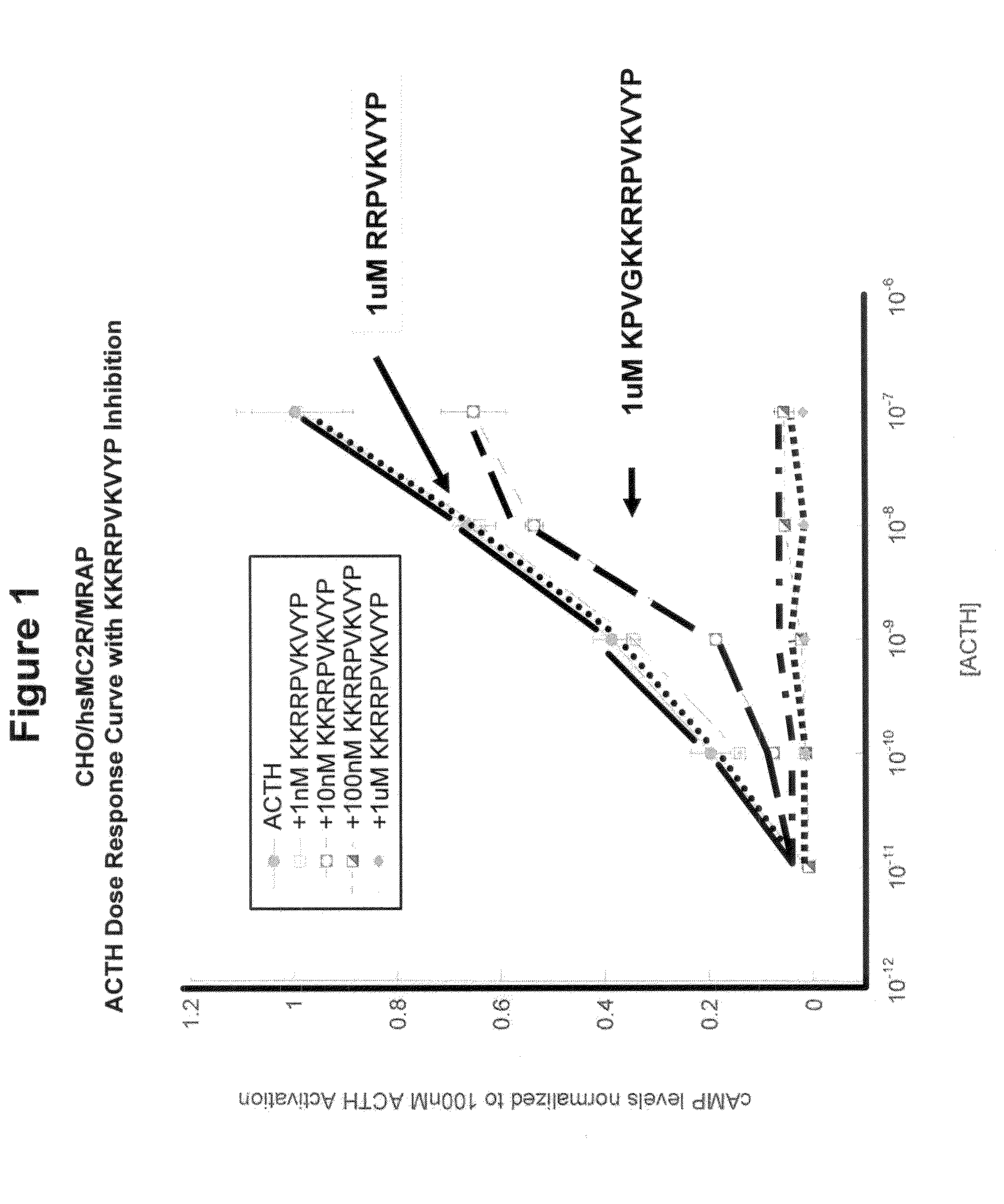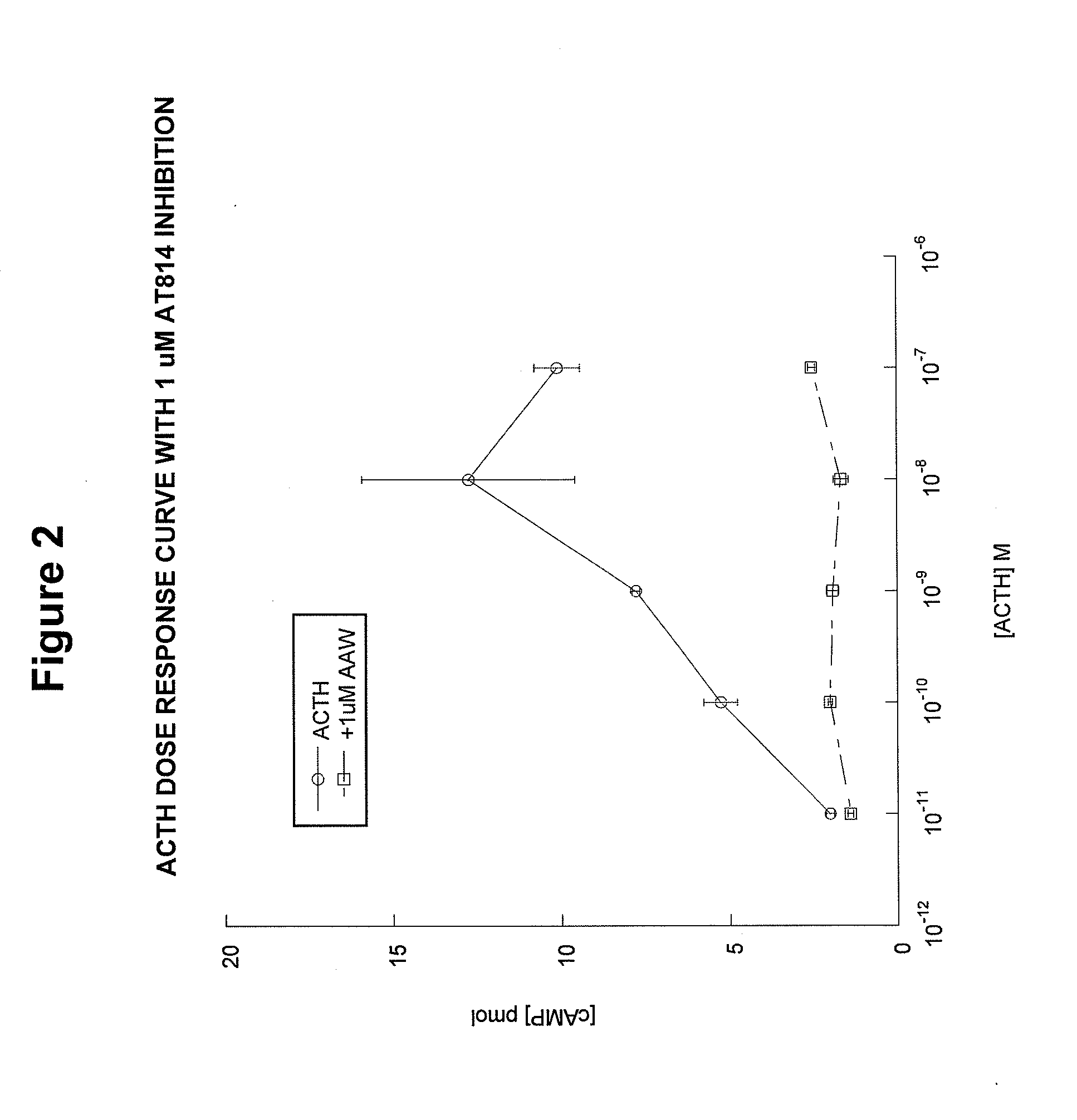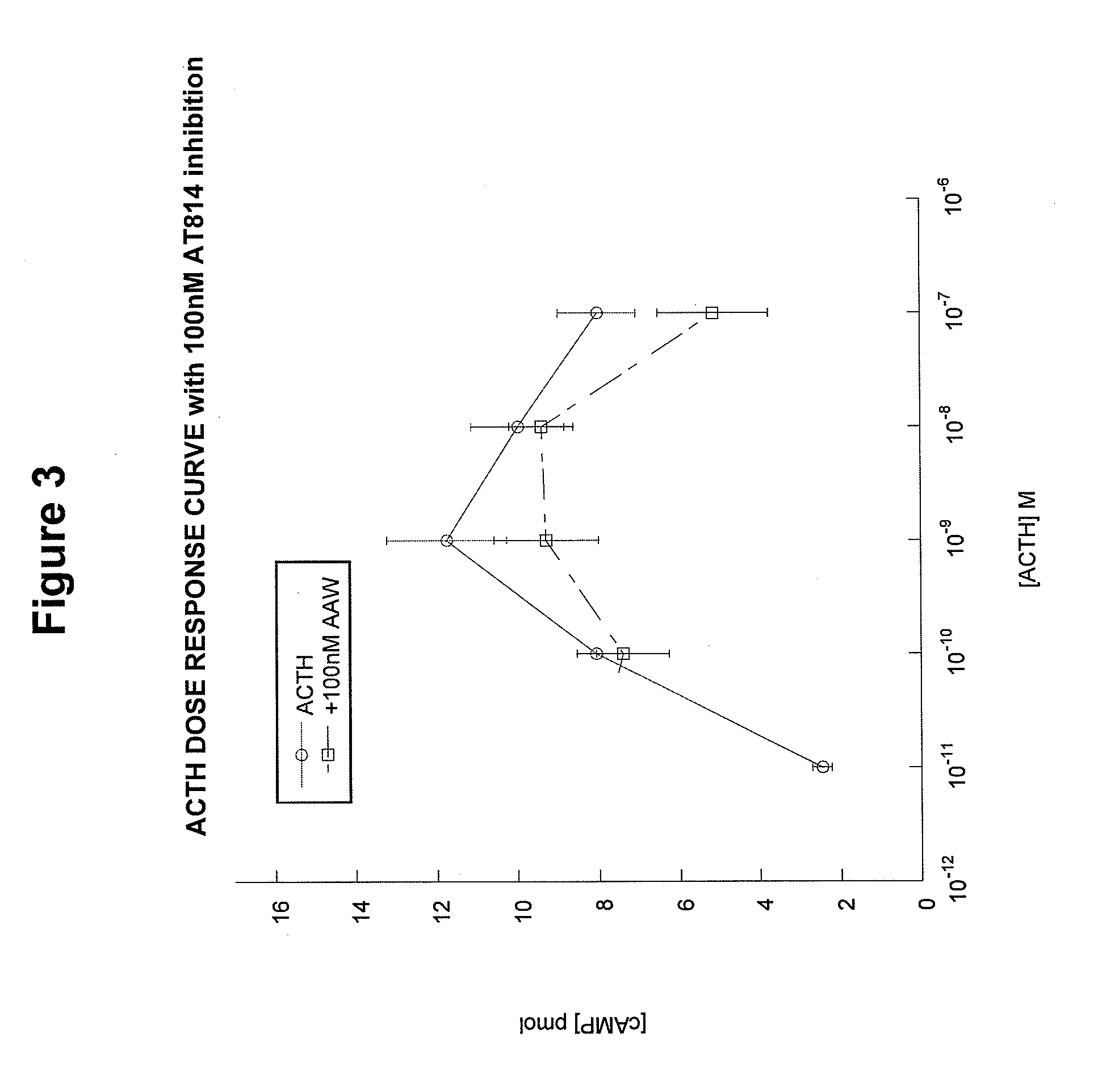Acth antagonist peptides
a technology of peptides and antagonists, applied in the field of acth antagonist peptides, can solve the problems of increasing fat deposits, blood pressure levels, and overproduction of cortisol, and achieve the effects of increasing fat deposits, blood pressure, and increasing fat deposits
- Summary
- Abstract
- Description
- Claims
- Application Information
AI Technical Summary
Benefits of technology
Problems solved by technology
Method used
Image
Examples
example 1
Inhibition of MC2R Activation by ACTH(15-24)
[0086]The overproduction of ACTH(1-39) by the anterior pituitary gland, for example as a result of Cushing's Syndrome or due to chronic stress, leads to the overstimulation of melanocortin 2 receptors (MC2R) on adrenal cortical cells and the subsequence overproduction of cortisol. One strategy for disrupting this cascade is to block the activation of MC2R by introducing an ACTH antagonist. From previous studies, it was known that: (a) all melanocortin peptides activate melanocortin receptors via the HFRW (SEQ ID NO:8) motif present near the N-terminal of these peptides; (b) α-MSH (NAc-SYSMEHFRWGKPV-NH2; SEQ ID NO:9) has the HFRW (SEQ ID NO:8) motif but cannot activate MC2R; and (c) ACTH(1-24) [SYSMEHFRWGKPVGKKRRPVKVYP; SEQ ID NO:4] is as potent an activator of MC2R as ACTH(1-39). Collectively, these data point to the KKRRPVKVYP (SEQ ID NO:1) region in ACTH as a second site involved in the activation of MC2R.
[0087]To test this hypothesis, a...
example 2
Comparison of Dose Response Curves for ACTH(15-24) and ACTH Antagonist AT814
[0093]The MC2 receptor (ACTH receptor) on adrenal cells has two binding sites. One binding site accommodates the HFRW (SEQ ID NO:8) motif in ACTH(1-24) and the other binding site accommodates the KKRRP (SEQ ID NO:5) binding site [SYSMEHFRWGKPVGKKRRPVKVYP; SEQ ID NO:4]. We hypothesized that if the KKRRP (SEQ ID NO:5) site were occupied, then ACTH(1-24) would not be able to activate MC2R. As shown in FIG. 1, this hypothesis is correct. Co-incubation of ACTH(1-24) with the inhibitor ACTH(15-24) completely blocked activation of the receptor at concentrations of 10−6 M and 10−7 M, and resulted in partial blockage of activation at a concentration of 10−8 M.
[0094]AT814 is another example of an analog designed to block the activation of the MC2 receptor. However, unlike ACTH(15-24), AT814 has some specific limitations. AT814 [SYSMEHFRWGKPVGKRAAWVKVYP; SEQ ID NO:19] has a modified KKRRP (SEQ ID NO:5) motif (underline...
PUM
| Property | Measurement | Unit |
|---|---|---|
| time | aaaaa | aaaaa |
| concentration | aaaaa | aaaaa |
| psychological stress | aaaaa | aaaaa |
Abstract
Description
Claims
Application Information
 Login to View More
Login to View More - R&D
- Intellectual Property
- Life Sciences
- Materials
- Tech Scout
- Unparalleled Data Quality
- Higher Quality Content
- 60% Fewer Hallucinations
Browse by: Latest US Patents, China's latest patents, Technical Efficacy Thesaurus, Application Domain, Technology Topic, Popular Technical Reports.
© 2025 PatSnap. All rights reserved.Legal|Privacy policy|Modern Slavery Act Transparency Statement|Sitemap|About US| Contact US: help@patsnap.com



